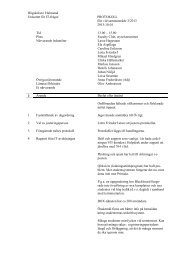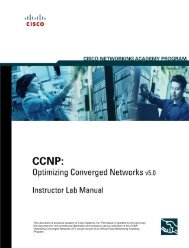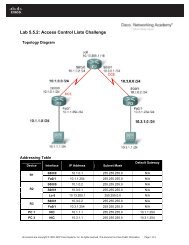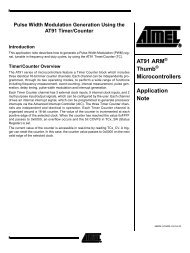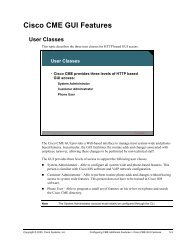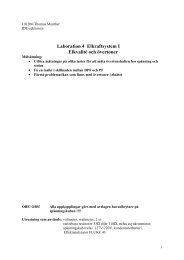ANNUAL REPORT 2012
ANNUAL REPORT 2012
ANNUAL REPORT 2012
Create successful ePaper yourself
Turn your PDF publications into a flip-book with our unique Google optimized e-Paper software.
HTM - Hierarchical Temporal Memory on Manycores<br />
HTM - Hierarchical Temporal Memory on Many-cores<br />
T. Nordström, D. Hammerstrom, Zain-ul-Abdin, J. Duracz, and B. Svensson<br />
Centre for Research on Embedded Systems<br />
Introduction<br />
An increasingly important aspect of embedded computing is<br />
the processing and understanding of noisy real world data,<br />
then making decisions and taking timely actions based on these<br />
data. Consequently, various kinds of intelligent computing<br />
structures are being investigated as important building blocks<br />
in embedded system design.<br />
One very promising algorithm is Hierarchical Temporal Memory<br />
(HTM) which is being developed by Numenta, Inc. and<br />
which is already being used in a number of real applications.<br />
Being based on more biological kinds of models, HTM is massively<br />
parallel, but it is also computationally intensive and as<br />
it is integrated into real applications, it is starting to run into<br />
performance limitations. The goal of this CERES project is to<br />
explore suitable hardware support for the acceleration of the<br />
Hierarchical Temporal Memory<br />
HTM Learning<br />
Cortical Learning Algorithm (CLA) is a memory system that<br />
learns sequences of patterns and makes predictions. When an<br />
HTM model is exposed to a stream of data the CLA predicts<br />
what is likely to happen next, similar to how you predict the<br />
next note in a familiar song or the next word someone is likely<br />
to say in a common phrase. In addition, the CLA modifies<br />
its memory with each new record. Thus the HTM models are<br />
continually adapting to reflect the most recent patterns.<br />
Next Steps<br />
As memory is critical in HTM, as in most artificial neural network<br />
models, we will focus our effort on many-core mapping<br />
strategies towards optimizing memory management.<br />
In our cooperation with Portland State University, PSU has<br />
been focusing on FPGA and GPU implementation and HH<br />
on multi-core and Ambric/Adapteva “many-core” style parallelism.<br />
As a next step we hope to compare these different implementations.<br />
Project Key Data<br />
Partners: Halmstad University, Portland State University, Numenta,<br />
Inc., Nethra Imaging, Inc. , and Adapteva, Inc.<br />
Duration: Sep. 2011 – Dec. 2013,<br />
Funding: CERES+ project, Volume: 820 kSEK<br />
Contact: Tomas Nordström, HH<br />
HTM Structure<br />
The HTM-CLA is a highly detailed model of a layer of cells in<br />
the neocortex. In a typical CLA implementation there are 2000<br />
columns of simulated neurons (one per output bit of the spatial<br />
memory structure) and twenty simulated neurons per column,<br />
giving each CLA over 40,000 neurons. Each neuron has dozens<br />
of non-linear dendrite segments and potentially thousands of<br />
synapses.<br />
HTM on Adapteva<br />
Master students Zhou Xi & Luo Yaoyao, have implemented<br />
CLA on our Adapteva development board.<br />
They have investigated how to map HTM-CLA onto Adapteva’s<br />
Epiphany many-core architecture and have been running<br />
experiments to find out the speedup and efficiency of this<br />
HTM mapping onto this many-core architecture. Preliminary<br />
results show an almost perfect scalability when mapping HTM<br />
onto Adapteva.<br />
CERES Annual Report <strong>2012</strong><br />
23



